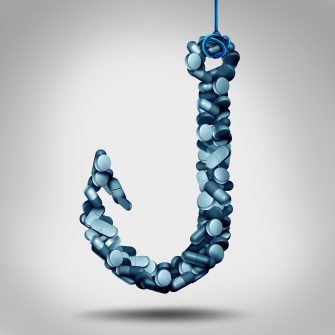
Could you benefit from chiropractic care? From headaches and back pain, to improving athletic performance, to lifestyle and nutritional advice, to just getting back to your favorite daily activities, the right chiropractor is a great partner for you in health and wellness. Learn more about how chiropractic can be beneficial for you and your family.
What to Expect on Your First Chiropractic Visit
Many new patients are not sure what to expect during their first appointment with a Doctor of Chiropractic (DC). Chiropractors start by taking a patient’s history and then performing a physical examination to develop a working diagnosis. Imaging or lab tests (such as MRI, CT scan or X-ray) may be used to confirm a diagnosis.
The combination of the history, exam, and diagnostic studies will enable your doctor of chiropractic to reach a diagnosis, which will help him or her to determine whether chiropractic services are appropriate for your condition. If your doctor determines you would be more appropriately managed or co-managed by another health care professional, he or she will make the proper referral.
Through a process of shared decision-making, you and your doctor will determine if chiropractic services are right for you. As part of this process, the doctor will explain your condition, recommend a treatment plan and review the risks and benefits of all procedures.
Based on the extent, timing or severity of the patient’s condition, chiropractic interventions may require several visits. Patients may also receive advice on home care, lifestyle modifications, exercise instruction and nutritional advice.
Learn More on What Research Shows about Chiropractic
A growing list of research studies and reviews demonstrate that the services provided by chiropractic physicians are both safe and effective. Following are excerpts and summaries from a few of those studies. The evidence strongly supports the natural, whole-body and cost-effective approach of chiropractic for a variety of conditions.
Acute and Chronic Pain
“Given that most patients with acute or subacute low back pain improve over time regardless of treatment, clinicians and patients should select nonpharmacologic treatment with superficial heat (moderate-quality evidence), massage, acupuncture, or spinal manipulation (low-quality evidence). If pharmacologic treatment is desired, clinicians and patients should select nonsteroidal anti-inflammatory drugs or skeletal muscle relaxants (moderate-quality evidence).”
American College of Physicians (2017)
“For patients with chronic low back pain, clinicians and patients should initially select nonpharmacologic treatment with exercise, multidisciplinary rehabilitation, acupuncture, mindfulness-based stress reduction (moderate-quality evidence), tai chi, yoga, motor control exercise, progressive relaxation, electromyography biofeedback, low-level laser therapy, operant therapy, cognitive behavioral therapy, or spinal manipulation (low-quality evidence).”
American College of Physicians (2017)
“Many treatments are available for low back pain. Often exercises and physical therapy can help. Some people benefit from chiropractic therapy or acupuncture.”
Goodman et al. (2013), Journal of the American Medical Association
“[Chiropractic Manipulative Therapy] in conjunction with [standard medical care] offers a significant advantage for decreasing pain and improving physical functioning when compared with only standard care, for men and women between 18 and 35 years of age with acute low back pain.”
Goertz et al. (2013), Spine
In a Randomized controlled trial, 183 patients with neck pain were randomly allocated to manual therapy (spinal mobilization), physiotherapy (mainly exercise) or general practitioner care (counseling, education and drugs) in a 52-week study. The clinical outcomes measures showed that manual therapy resulted in faster recovery than physiotherapy and general practitioner care. Moreover, total costs of the manual therapy-treated patients were about one-third of the costs of physiotherapy or general practitioner care.
Korthals-de Bos et al (2003), British Medical Journal
“Patients with chronic low-back pain treated by chiropractors showed greater improvement and satisfaction at one month than patients treated by family physicians. Satisfaction scores were higher for chiropractic patients. A higher proportion of chiropractic patients (56 percent vs. 13 percent) reported that their low-back pain was better or much better, whereas nearly one-third of medical patients reported their low-back pain was worse or much worse.”
Nyiendo et al (2000), Journal of Manipulative and Physiological Therapeutics
Comparing Chiropractic to Other Treatments
The results of a clinical trial showed that chiropractic care combined with usual medical care for low back pain provides greater pain relief and a greater reduction in disability than medical care alone. The study, which featured 750 active-duty members of the military, is one of the largest comparative effectiveness trials between usual medical care and chiropractic care ever conducted.
Goertz et al. (2018) JAMA Open Network
“Manual-thrust manipulation provides greater short-term reductions in self-reported disability and pain compared with usual medical care. 94% of the manual-thrust manipulation group achieved greater than 30% reduction in pain compared with 69% of usual medical care.”
Schneider et al (2015), Spine
“Reduced odds of surgery were observed for…those whose first provider was a chiropractor. 42.7% of workers [with back injuries] who first saw a surgeon had surgery, in contrast to only 1.5% of those who saw a chiropractor.”
Keeney et al (2012), Spine
“Acute and chronic chiropractic patients experienced better outcomes in pain, functional disability, and patient satisfaction; clinically important differences in pain and disability improvement were found for chronic patients.”
Haas et al (2005), Journal of Manipulative and Physiological Therapeutics
“In our randomized, controlled trial, we compared the effectiveness of manual therapy, physical therapy, and continued care by a general practitioner in patients with nonspecific neck pain. The success rate at seven weeks was twice as high for the manual therapy group (68.3 percent) as for the continued care group (general practitioner). Manual therapy scored better than physical therapy on all outcome measures. Patients receiving manual therapy had fewer absences from work than patients receiving physical therapy or continued care, and manual therapy and physical therapy each resulted in statistically significant less analgesic use than continued care.”
Hoving et al (2002), Annals of Internal Medicine
Headaches
“The number of migraine days significantly reduced for all three groups from baseline to post-treatment, while this effect continued for the chiropractic treatment group through all the follow-up time points. Furthermore, duration of migraines were significantly more reduced in the chiropractic than in the control pharmaceutical group toward the end of the follow-up period of the study.”
Chaibi A, Benth JŠ, Tuchin PJ, Russell MB. (2017) European Journal of Neurology.
“Cervical spine manipulation was associated with significant improvement in headache outcomes in trials involving patients with neck pain and/or neck dysfunction and headache.”
McCrory, Penzlen, Hasselblad, Gray (2001), Duke Evidence Report
Neck Pain
In a study funded by NIH’s National Center for Complementary and Alternative Medicine to test the effectiveness of different approaches for treating mechanical neck pain, 272 participants were divided into three groups that received either spinal manipulative therapy (SMT) from a doctor of chiropractic (DC), pain medication (over-the-counter pain relievers, narcotics and muscle relaxants) or exercise recommendations. After 12 weeks, about 57 percent of those who met with DCs and 48 percent who exercised reported at least a 75 percent reduction in pain, compared to 33 percent of the people in the medication group. After one year, approximately 53 percent of the drug-free groups continued to report at least a 75 percent reduction in pain; compared to just 38 percent pain reduction among those who took medication.
Bronfort et al. (2012), Annals of Internal Medicine
Cost Effectiveness
Findings from a study utilizing data from the North Carolina State Health Plan collected between 2000-2009 show that care by a doctor of chiropractic (DC) alone or DC care in conjunction with care by a medical doctor (MD) incurred “appreciably fewer charges” for uncomplicated lower back pain than MD care with or without care by a physical therapist.
Hurwitz et al. (2016), Journal of Manipulative and Physiological Therapeutics
Older Medicare patients with chronic low back pain and other medical problems who received spinal manipulation from a chiropractic physician had lower costs of care and shorter episodes of back pain than patients in other treatment groups. Patients who received a combination of chiropractic and medical care had the next lowest Medicare costs, and patients who received medical care only incurred the highest costs.
Weeks et al (2016), Journal of Manipulative and Physiological Therapeutics
Low back pain initiated with a doctor of chiropractic (DC) saves 40 percent on health care costs when compared with care initiated through a medical doctor (MD), according to a study that analyzed data from 85,000 Blue Cross Blue Shield (BCBS) beneficiaries in Tennessee over a two-year span. The study population had open access to MDs and DCs through self-referral, and there were no limits applied to the number of MD/DC visits allowed and no differences in co-pays. Researchers estimated that allowing DC-initiated episodes of care would have led to an annual cost savings of $2.3 million for BCBS of Tennessee. They also concluded that insurance companies that restrict access to chiropractic care for low back pain treatment may inadvertently pay more for care than they would if they removed such restrictions.
Liliedahl et al (2010), Journal of Manipulative and Physiological Therapeutics
Patient Satisfaction
“Chiropractic patients were found to be more satisfied with their back care providers after four weeks of treatment than were medical patients. Results from observational studies suggested that back pain patients are more satisfied with chiropractic care than with medical care. Additionally, studies conclude that patients are more satisfied with chiropractic care than they were with physical therapy after six weeks.”
Hertzman-Miller et al (2002), American Journal of Public Health
Widespread Use of Chiropractic
“Chiropractic is the largest, most regulated, and best recognized of the complementary and alternative medicine (CAM) professions. CAM patient surveys show that chiropractors are used more often than any other alternative provider group and patient satisfaction with chiropractic care is very high. There is steadily increasing patient use of chiropractic in the United States, which has tripled in the past two decades.”
Meeker, Haldeman (2002), Annals of Internal Medicine
Don't Risk Addiction: Choose Chiropractic Care First
 Each year in Tennessee: More opioid prescriptions are written than there are people living in our state, with more than 1 million prescriptions left over.
Each year in Tennessee: More opioid prescriptions are written than there are people living in our state, with more than 1 million prescriptions left over.
Each day in Tennessee: At least three people die from an opioid-related overdose which surpasses the number of daily traffic fatalities.
FROM 2010 TO 2016, OPIOID ABUSE HAS CLAIMED THE LIVES OF OVER 7,225 TENNESSEANS.
NON-PHARMACOLOGIC APPROACHES ARE NEEDED.
Chiropractic care is a first-line, drug-free and cost-effective health care pain management approach, yielding high patient satisfaction scores. A study by the Alternative Medicine Integration Group found that patients using chiropractic physicians as their first mode of treatment demonstrated a 60.2% decrease in in-hospital admissions, a 62% decrease in outpatient surgeries and procedures, and 85% decrease in pharmaceutical costs.
The Tennessee Chiropractic Association urges legislators, insurers and employers to lead the fight to put chiropractic and other non-pharmacologic options as the first line of defense.
Doctors of chiropractic – who receive a minimum of seven years higher education – are specifically trained in clinical evaluation and diagnosis. They provide non-pharmaceutical care and rehabilitation to individuals suffering from acute, subacute and chronic back, low back and neck pain, headaches, neuro-musculoskeletal conditions and other related syndromes.
Choose Chiropractic Care First! Click here to find a doctor near you.
Simply click on the images to view these brief videos on how chiropractic care can improve your health and help end the opioid epidemic. To view our full library on informative videos, click here.


